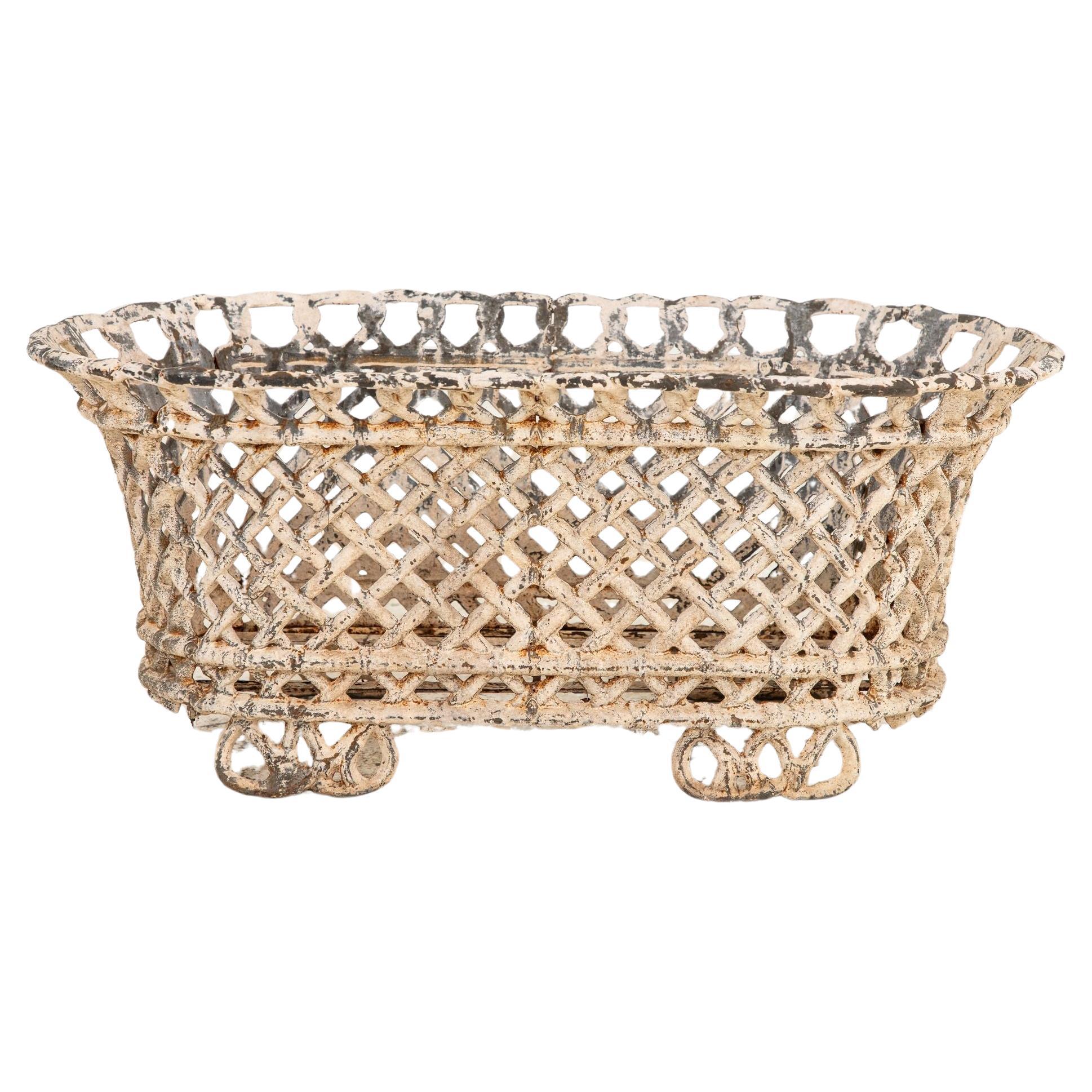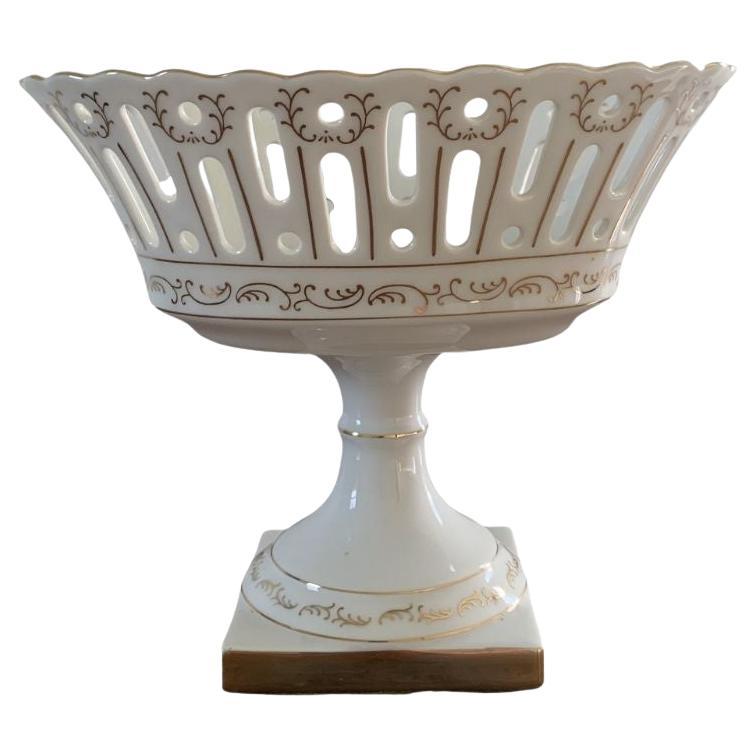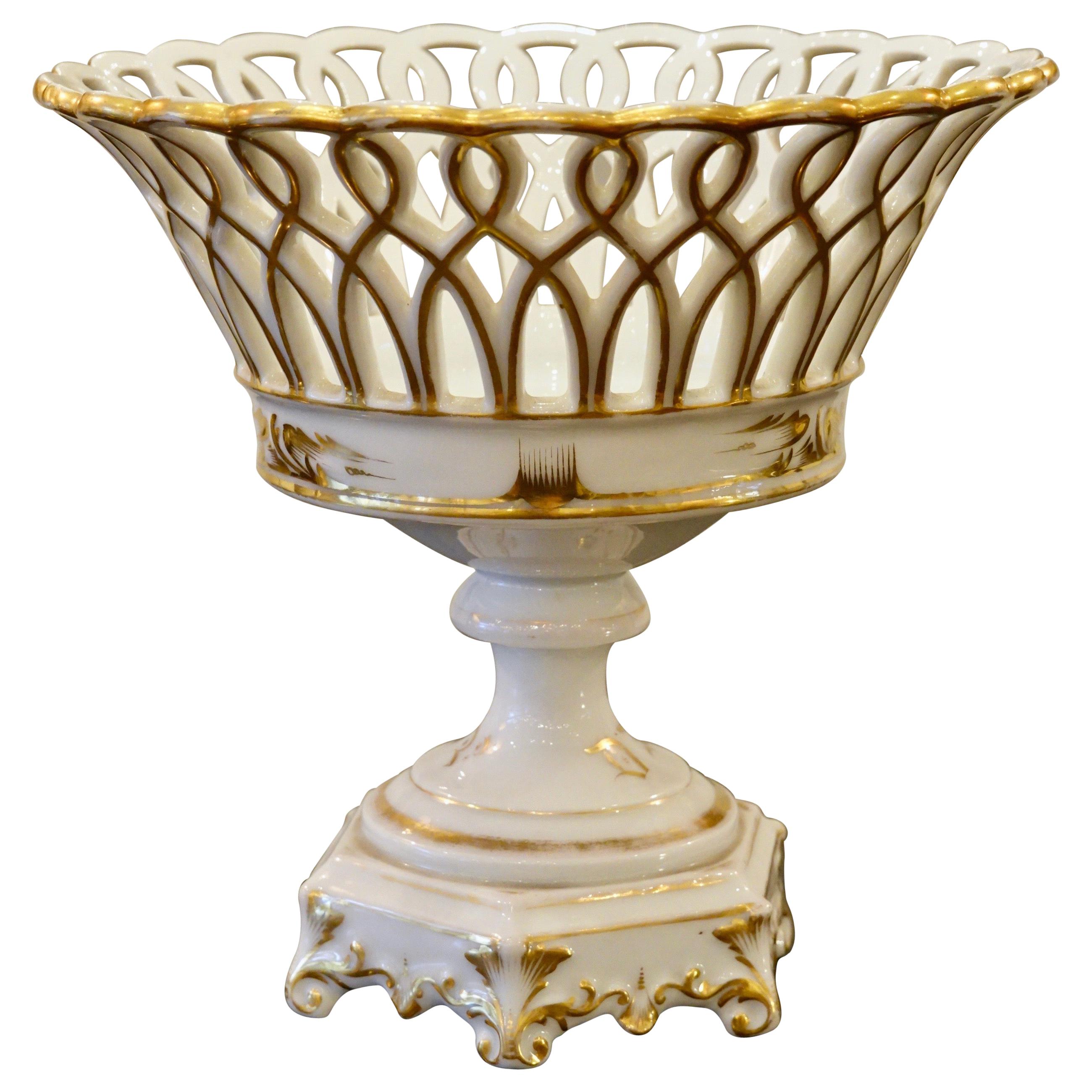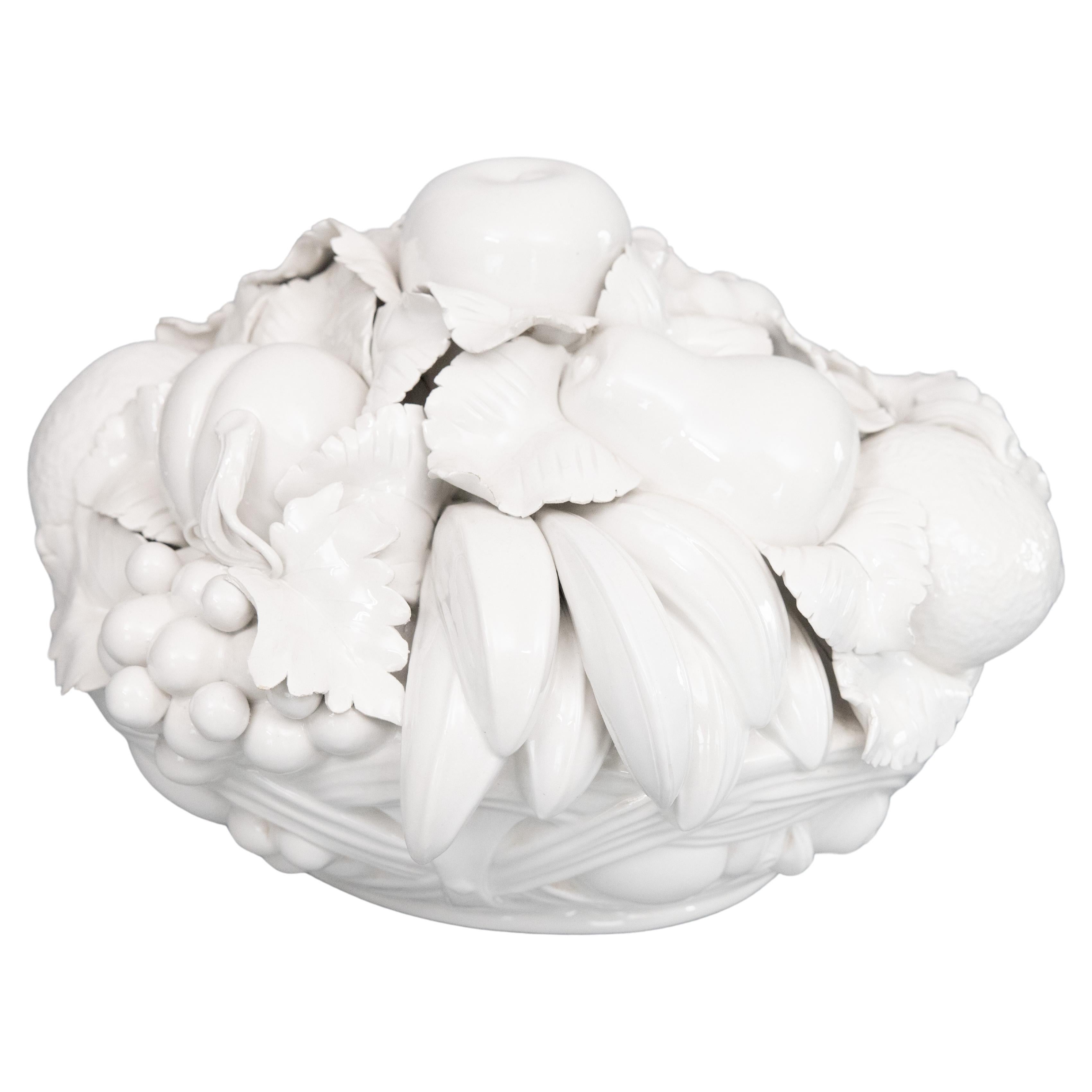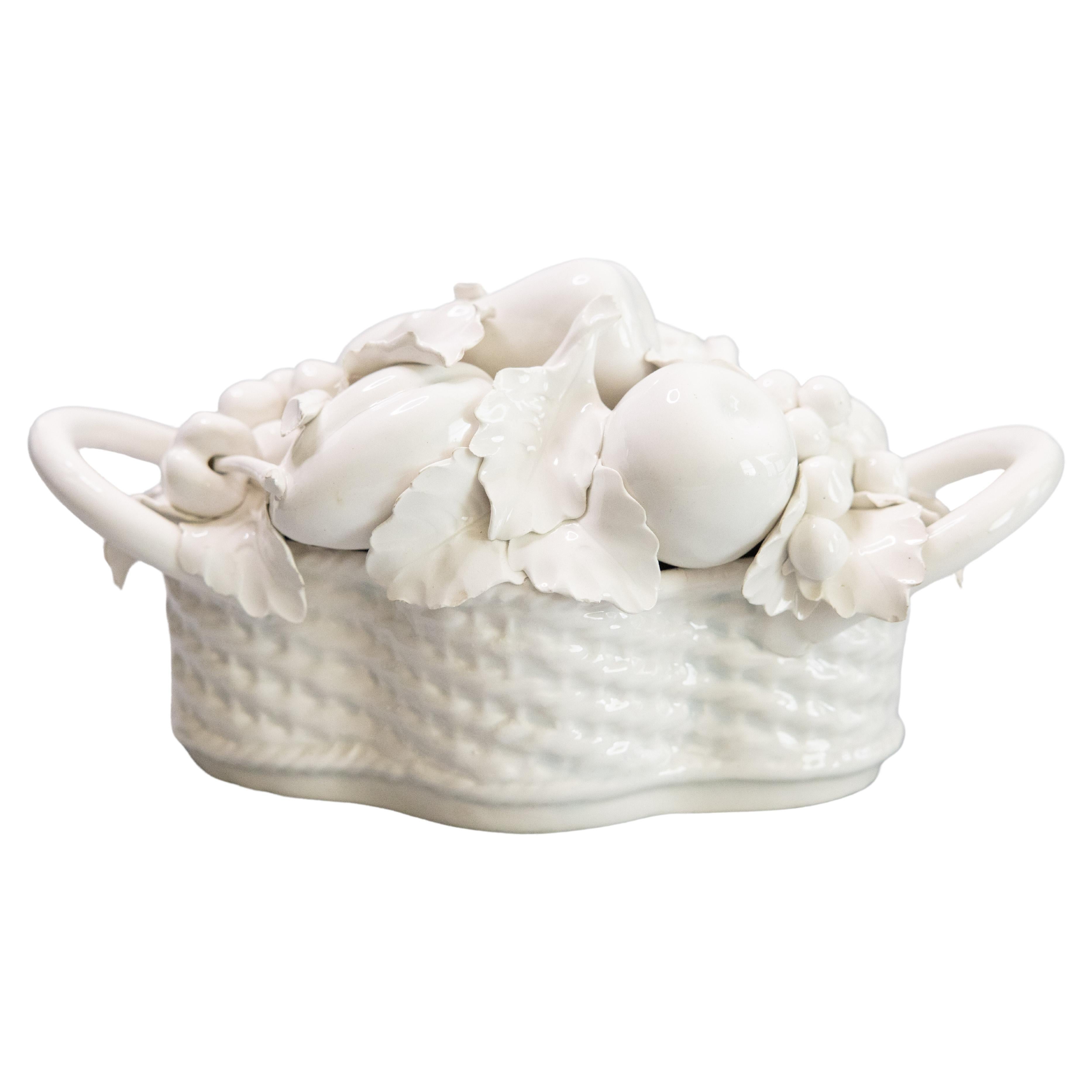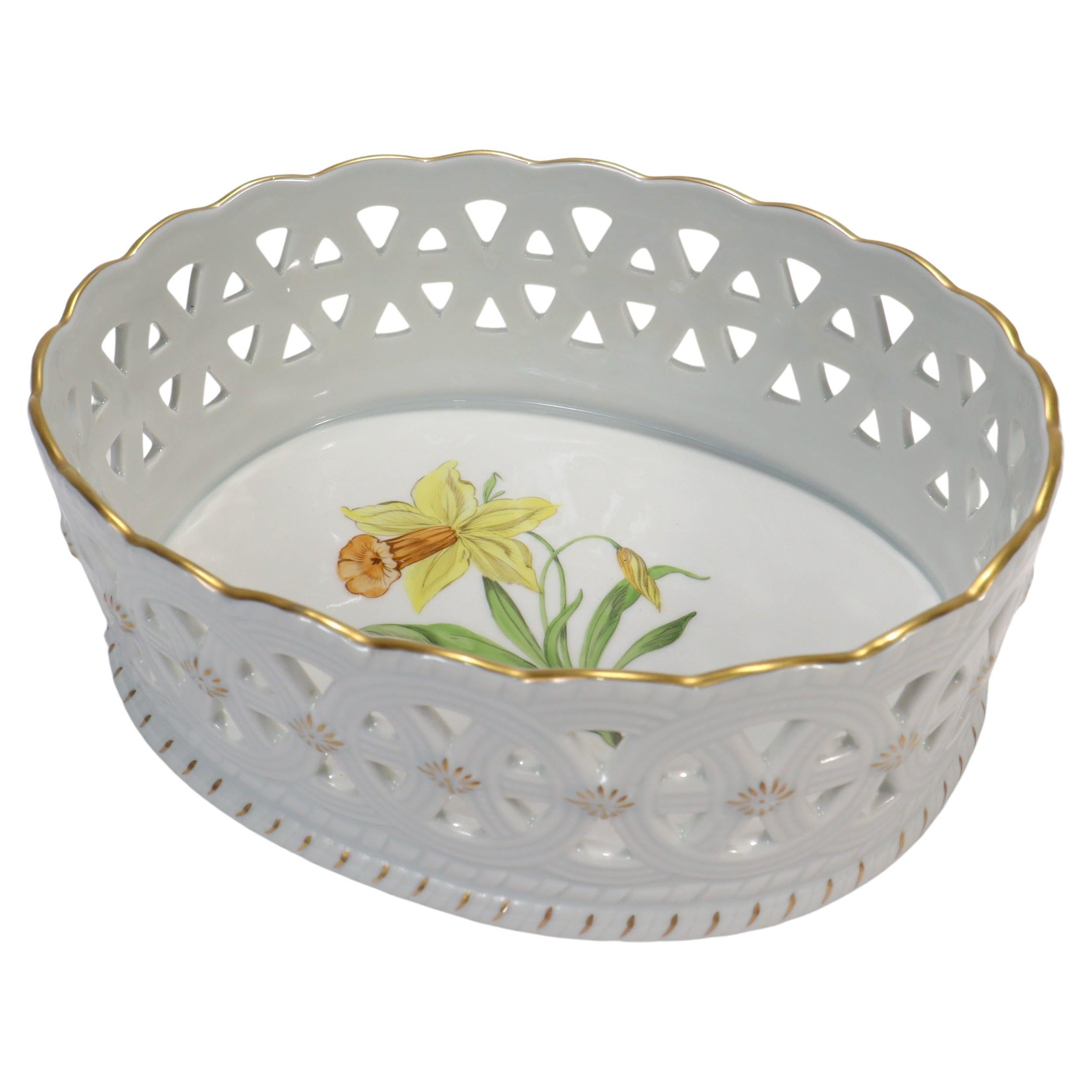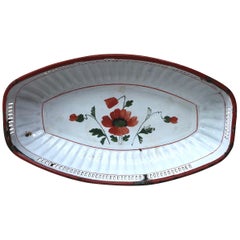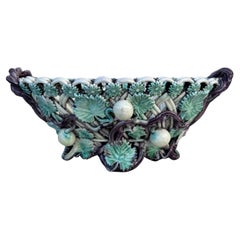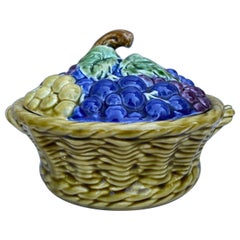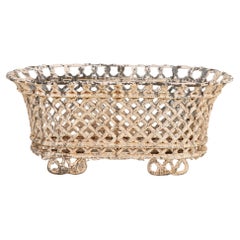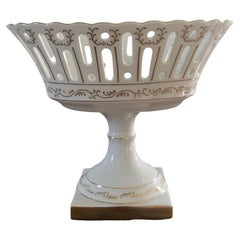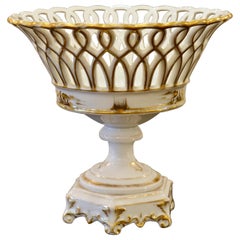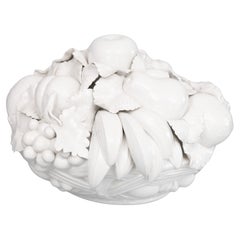Items Similar to French White Reticulated Grapes Basket, circa 1900
Want more images or videos?
Request additional images or videos from the seller
1 of 5
French White Reticulated Grapes Basket, circa 1900
$680
$85020% Off
£515.89
£644.8620% Off
€591.50
€739.3720% Off
CA$968.70
CA$1,210.8820% Off
A$1,051.28
A$1,314.1020% Off
CHF 553.14
CHF 691.4220% Off
MX$12,773.06
MX$15,966.3320% Off
NOK 6,925.18
NOK 8,656.4720% Off
SEK 6,520.69
SEK 8,150.8620% Off
DKK 4,416.44
DKK 5,520.5520% Off
About the Item
French white faience grapes-motif reticulated handled basket, circa 1900.
- Dimensions:Height: 6 in (15.24 cm)Width: 9 in (22.86 cm)Depth: 12.5 in (31.75 cm)
- Style:Romantic (In the Style Of)
- Materials and Techniques:
- Place of Origin:
- Period:1900-1909
- Date of Manufacture:1900
- Condition:Wear consistent with age and use.
- Seller Location:Austin, TX
- Reference Number:1stDibs: LU237936021813
About the Seller
5.0
Platinum Seller
Premium sellers with a 4.7+ rating and 24-hour response times
Established in 1995
1stDibs seller since 2016
1,936 sales on 1stDibs
Typical response time: <1 hour
- ShippingRetrieving quote...Shipping from: Austin, TX
- Return Policy
Authenticity Guarantee
In the unlikely event there’s an issue with an item’s authenticity, contact us within 1 year for a full refund. DetailsMoney-Back Guarantee
If your item is not as described, is damaged in transit, or does not arrive, contact us within 7 days for a full refund. Details24-Hour Cancellation
You have a 24-hour grace period in which to reconsider your purchase, with no questions asked.Vetted Professional Sellers
Our world-class sellers must adhere to strict standards for service and quality, maintaining the integrity of our listings.Price-Match Guarantee
If you find that a seller listed the same item for a lower price elsewhere, we’ll match it.Trusted Global Delivery
Our best-in-class carrier network provides specialized shipping options worldwide, including custom delivery.More From This Seller
View AllFrench Enamel Reticulated Corn Poppy Basket
Located in Austin, TX
French enamel reticulated basket with corn poppy motif, circa 1930.
Wears, enamel loss.
Category
Vintage 1930s European Rustic Decorative Baskets
Materials
Metal
$200 Sale Price
20% Off
Small French Majolica Reticulated Jardiniere Circa 1890
Located in Austin, TX
Small French Majolica Reticulated handled Jardiniere Circa 1890.
Leaves and berries.
W / 8 by 4.8 inches.
H / 3.4 inches.
Category
Antique 1890s French Rustic Decorative Baskets
Materials
Faience, Pottery
$544 Sale Price
20% Off
French Majolica Grapes Basket Sarreguemines, circa 1920
By Sarreguemines
Located in Austin, TX
French Majolica grapes basket signed Sarreguemines, circa 1920.
Category
Vintage 1920s French Country Decorative Baskets
Materials
Ceramic, Faience, Majolica
$384 Sale Price
20% Off
Rare French Majolica Violets Basket Sarreguemines Circa 1920
By Sarreguemines
Located in Austin, TX
Charming French Majolica Violets basket signed Sarreguemines, circa 1900.
The manufacture of Sarreguemines produced severals examples of baskets with fruits, more rarely with animals...
Category
Vintage 1920s French Rustic Decorative Baskets
Materials
Ceramic, Majolica
$720 Sale Price
20% Off
White Majolica Pate Tureen Digoin Sarreguemines Circa 1950
By Digoin & Sarreguemines
Located in Austin, TX
White Majolica Pate Tureen Digoin Sarreguemines Circa 1950.
Category
Vintage 1950s French Rustic Decorative Baskets
Materials
Ceramic
$256 Sale Price
20% Off
19th Century French Faience Egg Basket Desvres Fourmaintraux
By Desvres
Located in Austin, TX
19th Century French Faience egg basket signed Desvres Fourmaintraux.
Category
Antique 1890s French Rustic Decorative Baskets
Materials
Faience
$520 Sale Price
20% Off
You May Also Like
White Painted Cast Iron Latticework Basket, French early 20th C.
Located in South Salem, NY
This early 20th-century French treasure is a White Painted Cast Iron Lattice Work Basket, exuding timeless elegance and craftsmanship. Crafted with meticulous artistry, the delicate ...
Category
Early 20th Century French Planters and Jardinieres
Materials
Iron
Regency Reticulated Porcelain Basket Compote
Located in Elkhart, IN
A gorgeous white & gold regency style reticulated porcelain basket compote
Circa mid 20th century
Measures: 9"W x 6.5"D x 7.5"H
E...
Category
Mid-20th Century Neoclassical Decorative Bowls
Materials
Porcelain
$316 Sale Price
20% Off
Paris Porcelain and Parcel Gilt Reticulated Compote or Fruit Basket
Located in Pembroke, MA
Nice quality Paris porcelain reticulated compote (corbeille, fruit basket) in tazza form with gilded decoration (late 19th century).
Category
Antique Late 19th Century French Neoclassical Centerpieces
Materials
Porcelain
Large Italian White Blanc De Chine Creamware Fruit Basket Centerpiece, c. 1950
Located in Pearland, TX
A stunning large Mid-Century Italian Blanc de Chine creamware glazed ceramic handmade fruit bowl or basket centerpiece. No maker's mark. This gorge...
Category
Mid-20th Century Italian Centerpieces
Materials
Ceramic, Pottery
Mid-20th Century Italian White Blanc De Chine Creamware Fruit Basket Centerpiece
Located in Pearland, TX
A stunning Mid-Century Italian Blanc de Chine creamware glazed porcelain handmade fruit bowl or basket centerpiece. Marked "Hand-Painted Made in Italy". This gorgeous arrangement fea...
Category
Mid-20th Century Italian Natural Specimens
Materials
Creamware, Porcelain
18th Century Style Ludwigsburg Porcelain Reticulated or Openwork Basket
By Ludwigsburg Porcelain Manufactory
Located in Philadelphia, PA
A fine German porcelain openwork or reticulated basket.
By the Ludwigsburg Porcelain Manufactory.
With pierced sides of interlocking circular...
Category
20th Century German Baroque Porcelain
Materials
Porcelain
More Ways To Browse
Antique White Bowls
Reticulated Basket
Vintage Hamper
Wicker Hamper
Woven Wire Basket
Antique Chinese Fruit Basket
Blanket Holder
Large Indian Basket
Rush Baskets
Victorian Metal Basket
Wicker Dog
Winnowing Basket
Woven Basket Philippines
Antique Shoulder Yoke
Black Waste Paper Basket
Chateauneuf Du Pape
Ethnic Baskets
French Bread Basket
